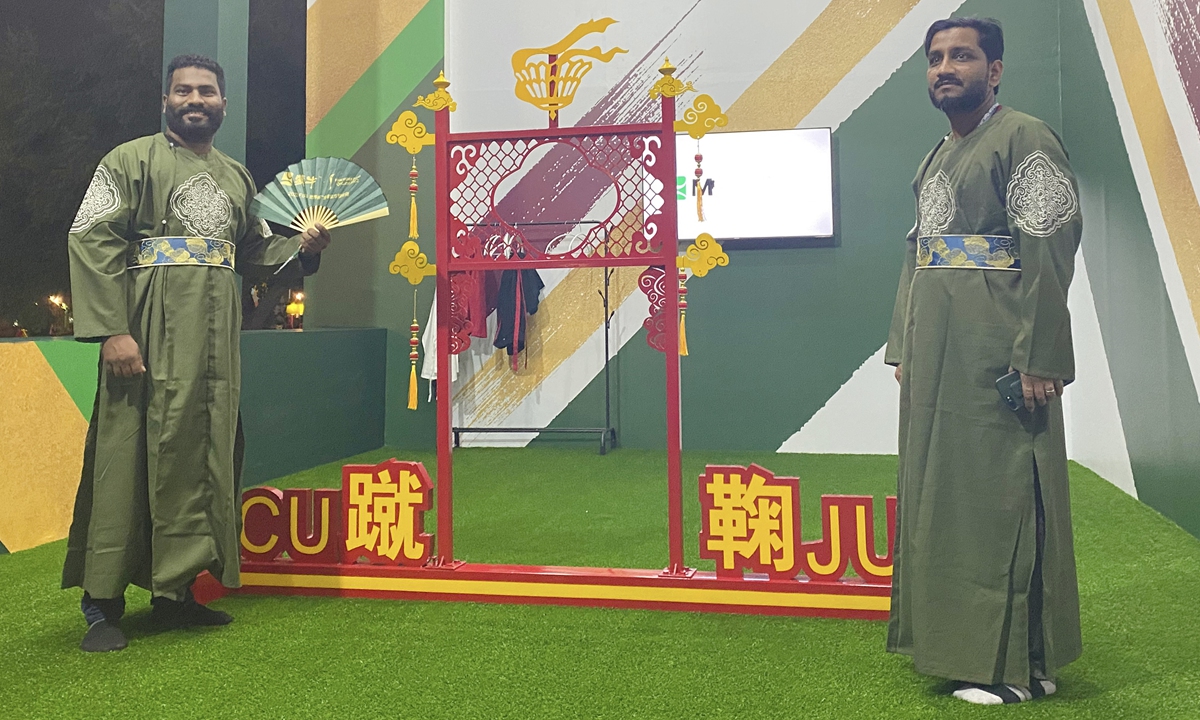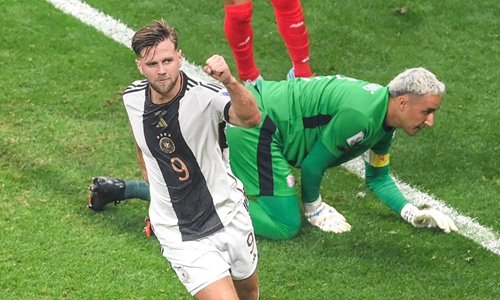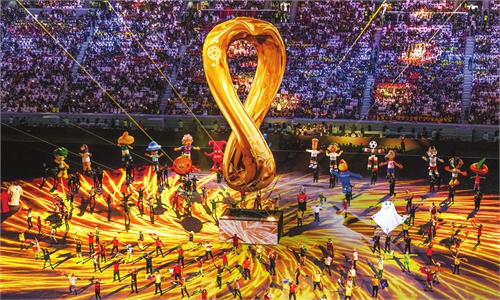SPORT / MISCELLANY
Cuju, China’s ancient prototype of modern football, debuts in Qatar
A connection to the past

Li Weipeng plays cuju in Doha, Qatar on November 21, 2022. Photo: Courtesy of the Network of International Culturalink Entities
At the Al Bidda Park in Doha, Qatar, some Chinese people wearing traditional Chinese clothing demonstrate the tricks and skills of the ancient sport known as cuju, the prototype of modern football that dates back to more than 2,000 years ago. The difficult but splendid tricks they performed won big applause and cheers from the crowds packing the public viewing areas."I did not understand their language, but I could feel their strong interest in our traditional Chinese culture through their excited faces and enthusiastic interactions," Li Weipeng, one of the performers, told the Global Times in a voice full of pride.
As a seventh-generation inheritor of cuju in China, Li and his team came to Qatar to introduce cuju culture to the world.
On November 21, the China-Qatar Youth Football Exchange and Experience Activity was held at the FIFA Fan Festival in Doha.
Under the guidance of Li and Ma Guoshuai, an expert in cuju and head of the cuju team in Zibo, East China's Shandong Province, the young players from China and Qatar changed into traditional Chinese cuju clothing to experience the difference between the ancient Chinese sport and modern football.
The origin of football
Cuju, a national intangible cultural heritage, has been recognized by football's world governing body FIFA as the prototype of modern football, with the city of Zibo named as the official birthplace in 2004.
"The literal translation of cuju is 'kick the ball,'" Ma told the Global Times.
According to Ma, the sport can be traced back to the Spring and Autumn Period (770BC-476BC).
At the time, it was used to train military cavaliers due to the fierce nature of the sport. It was later spread from the army to the royal courts and upper classes as a form of entertainment during the Han Dynasty (206BC-AD220).
Cuju later spread to East Asia and Europe during the Tang Dynasty (618-907) and later developed into modern football in England.
It experienced its golden era during the Song Dynasty (960-1279) when the earliest professional cuju organizations, similar to today's football associations, were set up.
Originally the ball was stuffed with feathers but later they moved on to a ball similar to what we have today, an air-filled ball. There were also different ways to play cuju in different dynasties.
During the Song Dynasty, people paid more attention to personal skills. The playing field was enclosed with thread, with players taking turns to kick the ball on the field. Players could touch the ball with any part of the body except their hands and the number of players ranged anywhere from two to 10. Points would be deducted if the ball didn't reach the player or if it overshot, and were awarded for judging the passing distance right or getting a first-time pass. The team with the highest score would win.
Global acceptance
Li said the football player who plays cuju the best was Argentine superstar Lionel Messi.
"Messi indeed has a good sense for handling the ball. He was very good at kicking and shooting the cuju ball after a very short practice session, which shows that cuju is interlinked with many aspects of modern football," Li said, recalling the time he had the opportunity to play cuju with Messi when the star came to China for a commercial tour.
Former Manchester United midfielder Juan Sebastian Veron also played cuju during a cultural exchange visit to Zibo.
"We helped him [Veron] to wear the cuju clothing that ancient emperors wore, and played a cuju match with his team. That was a very unforgettable memory," Li said.

Two fans pose beside a goal used in the game of cuju in Doha, Qatar on November 21, 2022. Photo: Courtesy of the Network of International Culturalink Entities
Besides the youth football exchange activity, Li said they would demonstrate cuju at the football fan zone at the Al Bidda Park."Most audiences become fans as the players [like in football] need to focus during the game," said Li, adding that their performances often catch the eyes of many fans.
"They are very curious about cuju. Many of them like to try cuju outfits and take a photo with us."
The two cuju players told the Global Times that the ongoing World Cup is like a big family, and they felt a united sports spirit.
"Here, football has no borders, you can often see fans wearing their teams' colors go to other spots to support other teams. People whose countries did not get in the World Cup don the jerseys of their favorite teams. Everyone is fully immersed in the feast," said Li.
They also encountered some Chinese football fans who flew to Qatar to experience the football feast.
"I met a Chinese man who picked Qatar as a transfer station on purpose and spent only a couple of hours rushing to the stadium just to feel the euphoria," said Ma.
Ma said he sometimes feels very at home as he sees a lot of Chinese elements at the World Cup, such as the Lusail Stadium constructed by the China Railway Construction Corporation, the new energy buses made in China, and the dazzling advertisements from Chinese companies.
"I hope one day, China can win a bid to host the World Cup and we can perform cuju and introduce the ancient sport to the world in our motherland," said Li.




